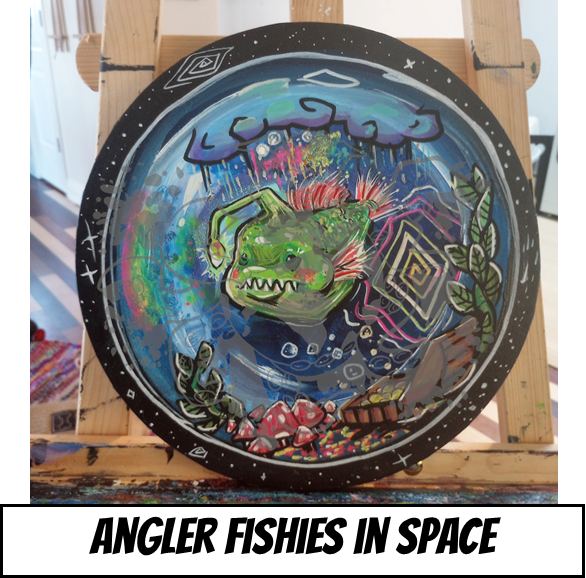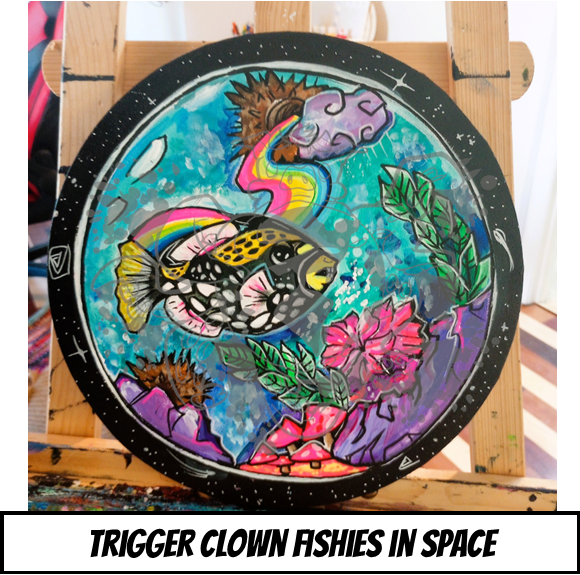Vendor and Pop Market Tips!
So you have a small business or product that you want to share with the world!? Now what?
This year I spent time vending and selling art full time. I am so proud of myself for stepping out of my comfort zone. We had a really good year, and met a lot of cool people. But, I am going to be terribly honest, there were some days and there were some interactions that were disappointing. And there were other days where I felt on top of my world. I have been selling my art for years, but this year I really leaned into advocating for myself and creating art that inspires others. I had a lot of people and future artists ask me what it is like selling art full time, so I decided to make a blog post. If you are someone who is looking to coordinate a market, you should definitely check out my previous blog post “Market Tips.” You should also check it out if you are a vendor wondering what types of markets fit your needs because the questionnaire provides great look fors..
There are so many places to begin, from launching a website shop, selling on social media or making money creating content. This blog is for anyone who wants to participate in a pop up market. The best piece of advice I have is to start small. Start with a small event so that you can learn and make mistakes without a huge investment. You will learn over time what types of pop up markets or art shows are best for you.
Here are some tips for those of you just starting out and ready to buy a tent for a pop up market.
1. Weights, weights, weights.
This should be listed a million times. I have only had one negative experience with not having enough weights on my tent, and let me tell you, my tent went flying. Luckily, it was before anyone else ever showed up because it was my first mainstream market, and I got there early. I thought that the little circle weights would be enough. It was definitely not. Luckily, a veteran vendor came to the rescue, and I learned that lesson early. Time and time again I see vendors take a huge risk for themselves and others by not having enough weight on their tents, and I have also seen people not care about not having weight even when someone kindly suggests it. Water weights and dumb bells may work for fair weather days, but please invest time into weights. We made our own weights using PVC and cement, and we bungee them to the center. There are many DIY solutions and plans online, so I won’t go into that here. We have also invested in stay-bars for more stability from a company called Flourish, so even when others are holding their tents down on windy days, our legs don’t budge because our legs stay anchored and level. We also keep our backup sandbags in the Jeep just in case. The bottom line is that each leg needs at least 40 lbs. Ok, I digress. I have seen and heard some horror stories. SO please. Weights, weights, weights.
2. Research the Market you are vending at.
If you haven’t read my market tips, and you are a vendor, there are some gems for you too. There are some questions that you will want answered before investing money into a market. Most markets charge $50-$100 to set up. Some days, no effort for promotion is done on the behalf of the vendors and this can lead to a disappointing day. Some days, unloading and set up is stressful because set up procedures are not in place. Some days….some days. Some days, you meet a market coordinator who goes above and beyond to mark spots, provide water and even a clean bathroom. It is always a good idea to visit the market you are interested in or scour the event pages and google for previous turn out. Even then, you cannot predict a market turn out because so many factors play into this, but at least working with quality market coordinators gives peace of mind that efforts are made. Do not be afraid to ask questions or give feedback. Advocate for yourself because quality vendors are worth it, especially when vendors invest over $50.
3. Be Flexible
Do not be afraid to experiment with your displays. We have tried so many iterations of our setup and even now still try to make optimal displays. You may see our Flourish mesh walls, but we used to use lattice and chains. Before that, easels and baskets on tables. And there was no way to get those paintings to stay straight on that lattice. Some people also use grid walls, which you can find on store supply online and they come in half sizes, which makes it a little lighter. Before that we only did indoor events with wire locker grids. Those are fun to assemble.😀 We used to practice setups in our living room and have drawn out the maps. Even then, we always end up making changes based on placement or weather. When considering table displays factor in things like wind, the crowd, and even small things such as displaying signage and your pricing. Have a family member shop your table setup and give you feedback. Join a facebook group for vendor displays and get ideas using the search bar or ask for advice. There are lots of resources. Also, if you can, walk the show and be observant after setup so that you can get ideas. Most vendors are friendly and share tips with fellow vendors. When all else fails, keep it simple and trust that your display is good enough for now. Don’t let not having the right display stop you.
4. Price Ranges
The economy and season can have an effect on how many shoppers actually shop. I had one show last year where I sold 0 paintings. Not one. Yet, I made $800 that weekend off of my $5-$20 price points. Some days those $5 items can turn into $100, ya know. Or some days, selling one big painting for $400 can really make your day, even if you sell nothing else. So, try to have a low and midpoint in your products. And always, bring a showstopper. Be careful with providing too many choices for shoppers. Some people can get overwhelmed and I often have to remind myself to hold back. If you put everything out, people will not always want to look, and some people don’t want to touch things or go through baskets/bins. It just depends. Three price points displayed in a way that is easy to see, visually, works well.
5. Meet yourself where you are.
I did not start art full time. I sold art for several years while working full time, and even still do things to supplement my income. Full time is not for everyone. I worked full time this year and did shows almost every weekend for market season. Next year I am planning on cutting back based on my wants and needs. I like doing markets for fun. There is a different type of anxiety that comes with sales providing for groceries. And that’s just the honest truth for the capitalistic society we live in now. And that’s ok. Remember your why. Remember the joy that you are filled with when you bring excitement to others with your creativity. You are amazing! Be kind and patient with yourself. It took me years to decide on the packaging and branding I use. But that is a whole ‘nother Blog. Just know, that everyone starts somewhere, and your good enough is good enough now. Don’t feel like you need a huge inventory or everything figured out before you share your gift. Just be yourself. Your people, your clients, your customers, your weirdos will find you. 🙂 Trust me.
If you made it to the end, thank you! I hope these tips help. Just remember, start small (and sturdy weights), meet yourself where you are, and give yourself room to grow. Let me know what you want to read about next! Branding, more about tent set up, etc.? Best wishes, and reach out if you have a question.
Inspire the character within!





















































